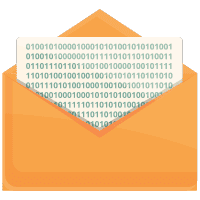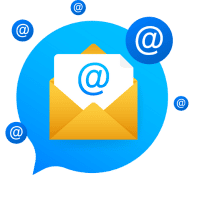Imagine choosing a programming language like selecting the right tool for a job. It is not just about learning any language; it is about choosing the one that aligns with your goals. I will guide you through this process, making it easy for you to understand.
Whether you want a career shift, a side project, or just looking to enhance your skills, mastering a language is not a complex puzzle if you break down the journey into manageable steps and enjoy the process.
Coding is like an adventure, not a chore. We will discuss how to incorporate daily coding challenges, algorithms, and competing in coding events in your life, as learning is a habit, not a task.
Let’s dive into our guide, in which I will tell you how to learn a programming language at lightning speed. We’ll be looking at the following:
- Strategic Selection: Choosing the Right Language for Your Goals
- Immersive Learning: Dive Headfirst into Practical Projects
- Interactive Learning Tools: Harnessing the Power of Online Resources
- Collaborative Learning: Joining Coding Communities for Support
- Continuous Practice: Reinforcing Skills Through Regular Challenges
- Seeking Feedback: Iterative Improvement for Lasting Proficiency
#1 Strategic Selection: Choosing the Right Language for Your Goals
When embarking on the journey to learn a new programming language, the first step is to define your objectives. Clearly understanding your purpose puts you in the right direction.
If your goal is to learn web development, you will have to learn languages like HTML, CSS, and JavaScript. For data science, Python should be considered, while for mobile development, you can go for Swift for iOS or Kotlin for Android.
Some languages overlap with others. You can use already-known languages to learn new languages easily. This familiarity can give you confidence!
Some languages that you can learn if you are proficient in another language are:
- C to C++ or vice versa
- Java to C# or vice versa
- Swift to Kotlin or vice versa
- SQL to NoSQL
#2 Immersive Learning: Dive Headfirst into Practical Projects
Learning a new programming language is not only about memorizing the syntax; it is about mastering its application in real-world scenarios. Comprehensive learning involves diving headfirst into practical projects and offering a dynamic and hands-on approach to understanding the language
By working on tangible projects, you gain invaluable experience in problem-solving, debugging, and optimizing code.
These projects will work as building blocks for your portfolio. As a software engineer, your portfolio is one of the most important things to have when applying for jobs. You can add small or big projects to your portfolio to highlight your experience and skills.
You can create your portfolio on many websites, like:
#3 Interactive Learning Tools: Harnessing the Power of Online Resources
In the fast-paced world of programming education, using interactive learning tools is important for quick skill development. Online resources provide a dynamic environment, offering many courses, tutorials, and coding challenges.
Let’s see some famous online courses, tutorials, and coding challenges:
Online courses and tutorials:
For real-time coding challenges:
Interactive platforms encourage active participation, ensuring learners actively contribute to their journey.
Online resources provide flexibility in terms of the student’s pace. Many platforms foster a sense of community through different discussions, forums, and collaborative features.
#4 Collaborative Learning: Joining Coding Communities for Support
When you are on the journey of becoming a proficient coder (and that too “fast”), having the support of your peers and a helpful community is always amazing.
Online forums, discussion boards, and social media groups in the same niche in which you are learning are extremely helpful in providing valuable resources.
As Helen Keller has said,
“Alone, we can do so little; together, we can do so much.”
By actively participating in these communities, you can gain vast knowledge, diverse perspectives, and real-world problem-solving experiences.
Participate in pair programming sessions to collaborate with your mentors, teachers, colleagues, or friends. Pair programming is a collaborative technique where two developers work together on the same code in real time.
This helps developers brainstorm problems together, which in turn leads to better solutions. You should always pair with people who have similar skills as yours.
#5 Continuous Practice: Reinforcing Skills Through Regular Challenges
The journey from zero to hero takes continuous practice when it comes to mastering a new programming language at pace.
Committing to solving daily challenges is a good habit that reinforces continuous practice. By dedicating a portion of your day to tackling these problems, you not only reinforce your understanding of coding concepts but also learn discipline that pays overtime.
The daily commitment fosters a sense of consistency, gradually building a strong foundation of skills that become ingrained in your routine.
One of the best things to practice is algorithms. They push you to new limits that you didn’t know when you started and instill a mindset of innovation.
Coding challenges demand a deeper level of analytical thinking. Regular exposure strengthens your ability to break down complex problems into logical and manageable components.
Challenges that stimulate real-world scenarios are helpful too. They help you evolve as a coder and a problem solver and open up a whole new world of possibilities.
#6 Seeking Feedback: Iterative Improvement for Lasting Proficiency
The path to lasting proficiency involves not only the skills you have but also the commitment to continuously refine your code.
Actively seeking feedback through code reviews helps you get the perspective of an experienced developer, which in turn helps you learn more. Not only that, but these reviews are also a source of knowledge transfer.
Through constructive criticism, both can exchange insights and come up with an even better solution.
Accepting feedback also improves your personality as you learn to not hold a grudge against people who show you negative feedback. Instead, you try to improve it.
Mistakes are not failures; they are growth opportunities. You always learn something from them, and they make you more confident.
Start learning a new language today!
By strategically selecting a language, immersing yourself in hands-on projects, mastering the concepts, using online resources, engaging in collaborative learning, and seeking feedback, you can learn a language quickly and efficiently.




